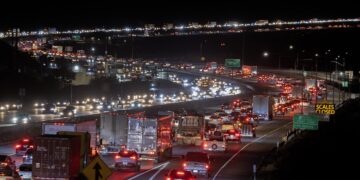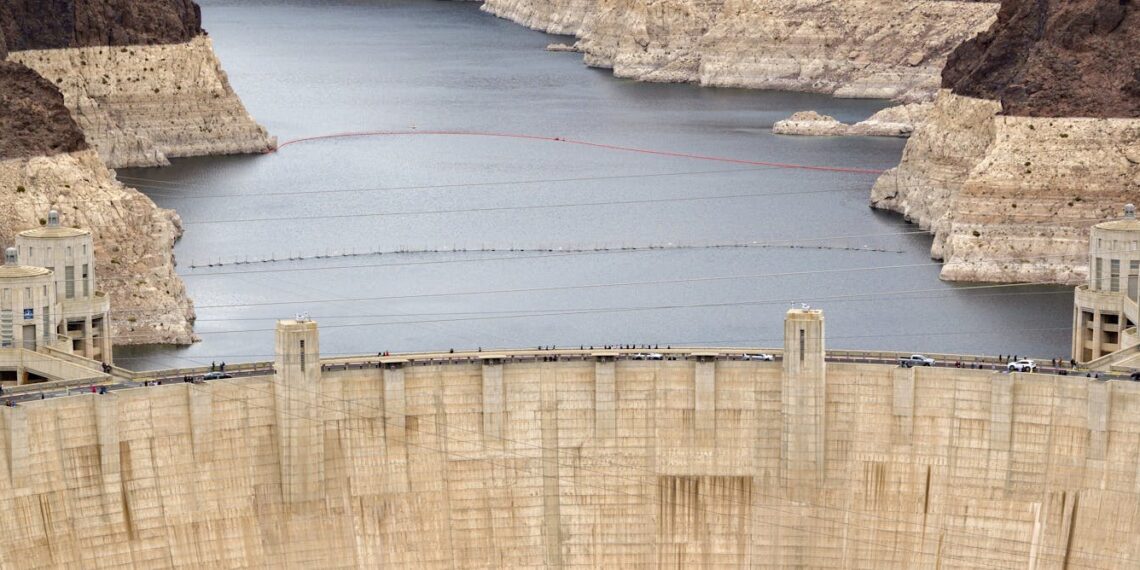Login to Continue Learning
Earth’s atmosphere contains carbon dioxide, which is essential for life—when present in moderation. Plants use CO2 as the source of carbon they convert into leaves and wood through photosynthesis. Combined with water vapor, CO2 acts as a thermal insulator, preventing our planet from freezing over. Without CO2 in the atmosphere, we wouldn’t have life as we know it on Earth.
Since the Industrial Revolution began in the late 1700s, human activities have significantly increased atmospheric concentrations of CO2 by burning coal and other fossil fuels. This increase has led to CO2 levels not seen in at least a million years. And the concentration continues to rise.
The following chart illustrates this trend:
– **Chart**: Atmospheric CO2 concentrations remained relatively stable for hundreds of years until the Industrial Revolution began, after which they sharply increased, especially since mid-1900s.
– [Image: A line chart showing stable CO2 levels for centuries and a sharp increase starting with the industrial revolution, accelerating in recent decades.]
Excess CO2 drives global warming
Who cares? Everyone should.
More CO2 in the air leads to higher surface temperatures. As temperatures rise:
– The **water cycle accelerates**, resulting in more intense floods and droughts.
– Glaciers melt, and warmer ocean water expands, causing sea levels to rise.
We are experiencing an increasing frequency or intensity of wildfires, heat waves, flooding, and hurricanes, all linked to rising CO2 concentrations. Additionally, the oceans absorb some of this CO2, becoming increasingly acidic, which can harm marine species crucial to the food chain.
Where is this additional CO2 coming from?
The primary source of extra CO2 is burning fossil fuels—oil, natural gas, and coal—to power vehicles, generate electricity, and run industries. These fuels are hydrocarbons built by plants that lived hundreds of millions of years ago.
These plants captured CO2 from the atmosphere, died, and their biomass was buried in water and sediments over time. Today, humans reverse this process by extracting these ancient fuels, burning them for energy, thus releasing long-sequestered carbon back into the atmosphere.
Where do CO2 emissions come from in the US?
The U.S. Environmental Protection Agency has tracked greenhouse gas emissions since 1990. In 2022:
– The U.S. emitted about **5,053 million metric tons** of CO2.
– Of this, 93% came from burning fossil fuels.
Specifically:
– About **35%** from transportation,
– **30%** from electricity generation,
– and **16%, 7%, and 5%** from industrial, residential, and commercial buildings respectively. Electric power serves these sectors equally.
What fossil fuels are being burned?
Transportation is dominated by petroleum products (gasoline and diesel).
Nationwide:
– Power plants consume roughly equal amounts of coal and natural gas.
– Natural gas use has increased while coal has decreased, driven by the shale gas industry’s growth in the U.S.
U.S. forests remove CO2 but not enough to offset human emissions, storing about **920 million metric tons** in 2022.
How US CO2 emissions have changed
Emissions peaked around 2005 at 6,217 million metric tons. Since then:
– Emissions have decreased slowly.
– Coal has been replaced by natural gas in electricity production.
Notable trends include:
– The U.S. economy has become more energy efficient, increasing productivity while decreasing emissions.
– Solar and wind energy generation has grown steadily and emits little CO2.
If the nation increasingly relies on renewables and reduces fossil fuel use, it will dramatically reduce its CO2 emissions.
Solar and wind are now cheaper than natural gas or coal. However, the Trump administration is cutting federal support for renewable energy while subsidizing fossil fuels. Growth in data centers also increases electricity demand, impacting future emissions.
How US emissions compare globally
In 2022:
– The U.S. ranked second behind China (12,000 million metric tons of CO2).
– China’s emissions surpassed the U.S. around 2005 or 2006.
Over time, the U.S. has emitted more CO2 than any other nation and still emits more per person than most industrialized countries. Chinese and European emissions are roughly half of U.S. per capita emissions.
The takeaway
There have been some promising trends in reducing US CO2 emissions and increasing renewable energy, but political and economic factors threaten progress.
Reducing emissions in all sectors is crucial to slowing the rise in atmospheric CO2. The world has the technology for large reductions, but decisions today will affect Earth’s climate for hundreds to thousands of years.



















